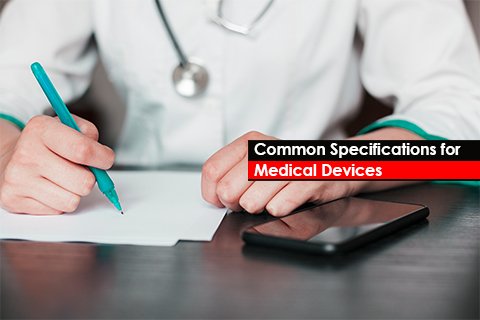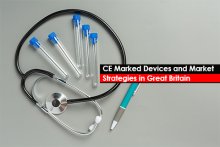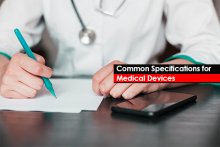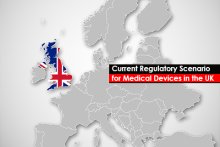Common specifications for medical devices refer to the specific medical purposes for which a device is intended to be used. This includes the type of medical conditions that a device is designed to diagnose, treat, monitor, alleviate, or prevent. It also includes the target patient population, the body part or type of tissue that the device is designed for, and the medical conditions for which the device is intended to be used (e.g., hospitals, clinics, home care settings, etc.). Limitations within the scope of application are often referred to as contraindications, which are specific situations, conditions, or patient groups for which the device should not be used because it may be unsafe or ineffective. The manufacturer must clearly state these contraindications to ensure the safety and efficacy of the device when it is used as intended.
The scope of the application must be consistent with the device’s design, performance, and function and should be supported by clinical evaluation data. It should be described using objective, clear, and industry-accepted terms. Additionally, the intended use environment, such as the necessary environmental conditions (temperature, humidity, etc.) that may affect the device’s safety and efficacy, should be specified.
Technical Requirements
Common specifications for medical devices include a broad range of criteria that ensure the safety, quality, and efficacy of these products. Here is an overview of the specifications related to materials, design, manufacturing processes, performance criteria, and testing methodologies.
- Materials
- Details of material identifications and specifications, including raw materials and components, must be provided.
- Complete chemical, biological, and physical characterization of the materials, especially those in contact with patients or critical to the device’s function, should be provided.
- Design
- The design should include principles of operation, mode of action, and technical specifications, such as chemical, physical, and biological properties.
- The device should meet relevant safety and performance requirements with reference to the applied standards and guidelines.
- Novel features of the device should be explained, and any materials of human or animal origin should be clearly identified.
- Manufacturing Processes
- There should be a detailed explanation of the manufacturing processes, including descriptions of raw materials, supplier control, and final product testing.
- Manufacturing should be conducted under controlled conditions with defined processes, qualified personnel, and appropriate equipment maintenance and calibration.
- Considerations for cleanliness, infection control, and packaging should be included.
- Performance Criteria
- Devices must be designed and manufactured to achieve the intended performance, in line with the generally acknowledged State-of-the-Art (SOTA) standards.
- Performance data should demonstrate suitability with respect to accuracy, sensitivity, specificity, and other relevant specifications.
- For In Vitro Diagnostic (IVD) devices, detailed information on performance characteristics, like analytical sensitivity and specificity, may be required.
- Testing Methodologies
- Verification and validation studies should be summarized to demonstrate compliance with the Essential Principles (EPs).
- Test reports on the product’s performance under the manufacturer’s quality control system should be provided.
- The testing methods used under the technical requirements of the product should be verified.
- Non-clinical and clinical study results, process validation studies, and software validation studies (if applicable) should be included.
- Additional Considerations
- The device’s contact with the human body (direct or indirect) and the nature of any human or animal-derived materials should be identified.
- The technical documentation should include a Bill of Materials (BOM), and the raw materials used in packaging should be identified.
- Risk management and a system-level hazard analysis may be required to identify and control potential hazardous events.
Clinical Data Requirements
Clinical data requirements for medical devices typically include a range of studies and trials designed to evaluate the safety, clinical performance, and/or efficacy of a device. The performance expectations in clinical settings are that the device should achieve its intended purpose, as claimed by the manufacturer, with an acceptable risk-benefit ratio. Here are the key aspects of clinical data requirements and performance expectations:
- Clinical Trials and Investigations: Clinical trials are systematic studies conducted to evaluate the safety, clinical performance, and/or efficacy of a medical device. These may include pre-market and post-market clinical trials, feasibility studies, and studies conducted for marketing approval.
- Clinical Data Sources: Clinical data can be derived from clinical investigations, literature reviews, post-market data, and other clinical experience data (also known as real-world data). Manufacturers are responsible for identifying relevant data and determining the extent of data required for a complete clinical evaluation.
- Clinical Evidence: Clinical evidence must include clinical safety and performance data, and it may also encompass pre-clinical and analytical data derived from bench testing. The evidence should demonstrate compliance with the relevant general safety and performance requirements.
- Studies involving Comparator Devices: Clinical evidence may also come from studies involving comparator devices; this method is used to demonstrate the safety and performance of a new medical device by comparing it with an existing device.
- Clinical Performance Studies: These studies are designed to assess the ability of a medical device to achieve the intended clinical outcomes. They should be scientifically robust and statistically valid, with clear inclusion and exclusion criteria for the subjects.
- Analytical Performance (for IVDs): The analytical performance of IVD medical devices refers to a device’s ability to detect or measure a particular analyte, which is characterized by specificity and sensitivity.
- Post-market Surveillance (PMS) and Post-market Clinical Follow-Up (PMCF): Manufacturers may be required to conduct PMS and PMCF to continue monitoring the clinical safety and performance of a device after it has been marketed.
- Clinical Evaluation Reports (CERs): Manufacturers must prepare CERs that summarize the safety and performance data of a device, thereby demonstrating compliance with the relevant safety and performance requirements.
- Regulatory Guidelines: Manufacturers should refer to specific Regulatory guidelines such as “Technical Guidelines for Clinical Evaluation of Medical Devices,” “Guidelines for the Design of Clinical Trials of Medical Devices,” and “Technical Guidelines for Accepting Overseas Clinical Trial Data of Medical Devices” for a detailed understanding of the clinical data requirements.
- Risk-based Approach: Clinical data requirements may vary from one medical device to another, based on the medical device risk classification, with higher-risk devices typically requiring more extensive clinical evidence.
- Special Considerations: Specific clinical data may be required to ensure the safety and efficacy of medical devices for certain sections of the population, such as paediatric patients or under-represented groups.
To sum up, common specifications for medical devices include the definition, usage, and environmental considerations of a device. The technical requirements are based on stringent criteria for the materials used, the design, and ensuring safety and efficacy. The clinical data requirements include ensuring safety and performance across diverse device functions. Needless to say, adhering to the complex and stringent Regulatory guidelines for medical devices can be challenging. Thus, manufacturers need to adopt a holistic approach to meet the standards set by the Regulatory bodies. Freyr provides comprehensive Regulatory support to help manufacturers place their medical devices on the market. Do you require end-to-end Regulatory support? Schedule a call with us today!





